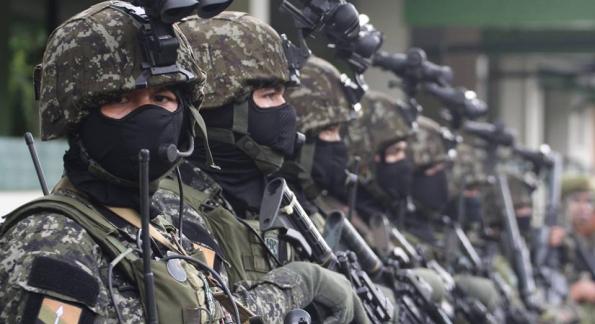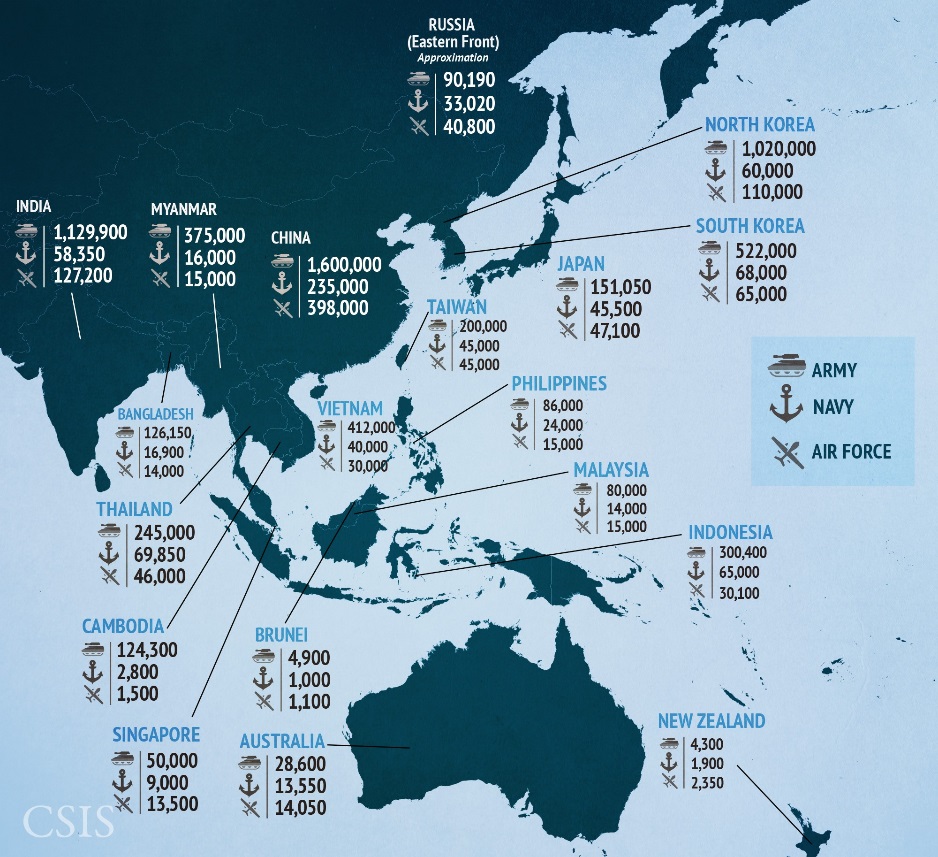
The Philippines has been beefing up its military significantly amid tensions with China in the South China Sea. President Benigno Aquino Jr. has just announced that PHP25Bn (USD522Mn) will be earmarked for the 2016 Philippine defense budget. This marks a single year record investment on military modernization and the national defense budget. Budget Secretary of the Philippines, Florencio Abad, has openly declared “we need to protect what is clearly within our territorial jurisdiction” emphasizing the gravity of the country’s maritime row with China in the South China Sea. This move also comes along with the country stepping joint military exercises with its allies the United States, Japan, and Australia. The region is increasingly said to be the world’s next flashpoint.
The country has long neglected the up-keep and maintenance of its armed forces and has now become a paramount concern for Manila. The President, along with the congress and senate, has approved the new AFP Modernization Act (Armed Forces of the Philippines) which sets the country on track for a 15-year effort of military modernization and upgrade. As part of the AFP Modernization Act, the Philippine government is expected to spend between PHP75Bn to PHP85Bn (USD1.65Bn to USD1.88Bn) by 2017 as part of the first 5 years of the 15 year armed forces modernization plan. (Gady, 2015)
Among the big tickets expected to be acquired by the Philippines in 2016 are two navy frigates (PHP18Bn), six close air support aircraft (PHP864.32Mn), night fighting systems (PHP1.12Bn), two C-130 cargo aircraft (PHP1.6Bn), two naval helicopters (PHP5.4Bn), and lead-in fighter trainer jets ammunition (PHP4.47Bn).
Other smaller ticket items up for acquisition are air surveillance radars (PHP2.68Bn), marine forces imagery and targeting drone support system (PHP684Mn), eight amphibious support vehicles (PHP2.5Bn), and air force full motion flight simulators (PHP246Mn). (Romero, 2016)
However big and expansive these numbers may sound it is still just a drop in the bucket as compared to neighboring China. There exists a massive power asymmetry between China and its smaller neighbors of South East Asia. In terms of per capita defense spending, the Philippines still ranks among the lowest spenders in the 10-block ASEAN region (Association of South East Asian Nations). “It is still a long way to go. We are just starting to enhance our capability. We still have a lot of things to do” said Philippine Air Force Chief Lieutenant General Jeffrey Delgado in August of 2015. Evidently China has a much greater military budget and capability. Only the United States has the capability to provide a significant military presence and wherewithal to stabilize the balance of power in the region.
Former colonizer and longtime friend, the United States has been helping the country beef up its military capabilities and to acquire more military hardware. This also comes as US President Barack Obama’s shift in foreign policy to the “Pivot to Asia”. Since 2002, the United States has already provided the Philippines with over USD500Mn in military aid and assistance as well as various types of military equipment. (Mogato, 2015) The US Ambassador to the Philippines has announced that the country can expect to receive in donation a total of 114 M113A2 armored personnel carriers from the US military by January 2016. (Agence France-Presse, 2015) This comes as a part of a new defense package under the EDCA (Enhanced Defense Cooperation Agreement) which is also been recently approved and ratified by the Philippine Congress and Senate and pushed by the President. US President Barack Obama has also promised that a big part of the USD140Mn in foreign military funding in the region will go to the Philippines. (Lee-Brago, 2015)
All these military upgrades and build up have come from a string of disputed islands and atolls in the South China Sea called the South China Sea Islands which include the Spratly’s, the Paracel Islands, Scarborough Shoal, and Senkaku Islands. The Paracel Islands are disputed by both China and Vietnam only and the Philippines has no interest on them because it is too far from the country’s EEZ (Exclusive Economic Zone). The Senkaku Islands are disputed by Japan, Taiwan, and China. The Scarborough Shoal which lies 118 nautical miles from the Philippine mainland is disputed by both China and the Philippines.
The Spratly group of islands is the most highly sought after and contested by 6 nations. The group of islands is the largest group among the four which makes up of more than 750 reefs, islets, atolls, cays, and islands that make up a total of only 4sq. kms. of land area spread out over 425,000sq. kms. of the South China Sea. The islands have no natural inhabitants but prove to be very rich fishing ground and is widely believed that they contain rich reserves of oil and natural gas. For these resources, 6 countries, China, Taiwan, the Philippines, Vietnam, Malaysia, and Japan all lay claims on in partiality or entirety of the region.

Figure 1 Asian Military Personnel by Center for Strategic International Studies (2016)
To see picture un full size click here
The Spratly Islands are located in a highly strategic, high traffic sea lane. These islands are right in the middle of one of the busiest and strategic shipping lanes of the world. Over USD5Tn in international trade pass through the South China Sea every year. It is one of the most important sea lane arteries of the world serving as a key transit route point for the bulk of energy imports of major Asian economies such as Japan, South Korea, and China. The South China Sea is also vital to the global food supply in which 10% of the world fishery products come from it.
Among all claimants to the South China Sea Islands, China has so far been the most aggressive. Gaining ground pretty fast, China has artificially reclaimed 20 times more land than all other claimant countries combined in the last 40 years. (Heydarian, 2015) China hopes that these developments will greatly increase her claim over the disputed islands. The Chinese hope that their land reclamation activities will help them push their case with the UNCLOS (United Nations Convention on the Law of the Sea). The Philippines has as well resorted to the arbitration hearings in The Hague formed under the aegis of the UNCLOS to require compulsory arbitration between China and the Philippines for maritime disputes.
The Philippines and the United States along with their allies and partners in the region are playing tag team to balance out regional power. Evidently, the Chinese is the strongest regional player and they aren’t too pleased that the Americans have stepped into their front door step. The Philippines alone does not have the military capability to exert and project its sovereign right over its territory, far less to prove to be of any significant balance shifter. The country’s efforts in its military modernization are commendable. However this is not enough to be of any significant weight in facing the Chinese alone.
References
Agence France-Presse. (2015, December 10). Retrieved from Defense News : http://www.defensenews.com/story/defense/2015/12/10/us-gives-military-vehicles-philippines/77101724/
Gady, F.-S. (2015, August 21). Retrieved from The Diplomat: http://thediplomat.com/2015/08/philippines-push-for-military-modernization-in-new-budget-proposal/
Heydarian, R. J. (2015, October 29). Retrieved from Rappler Philippines: http://www.rappler.com/thought-leaders/110843-america-china-west-philippine-sea
Lee-Brago, P. (2015, November 26). Retrieved from The Philippine Star: http://www.philstar.com/headlines/2015/11/26/1526041/us-pushes-edca-hikes-military-aid
Mogato, M. (2015, November 25). Retrieved from Reuters: http://www.reuters.com/article/us-southchinasea-china-philippines-usa-idUSKBN0TE0WO20151125
Romero, A. (2016, January 4). Retrieved from The Philippine Star: http://www.philstar.com/headlines/2016/01/04/1539163/big-ticket-items-afp-modernization-await-implementation
Main Picture taken from Hukbong Katihan ng Pilipinas facebook Community






